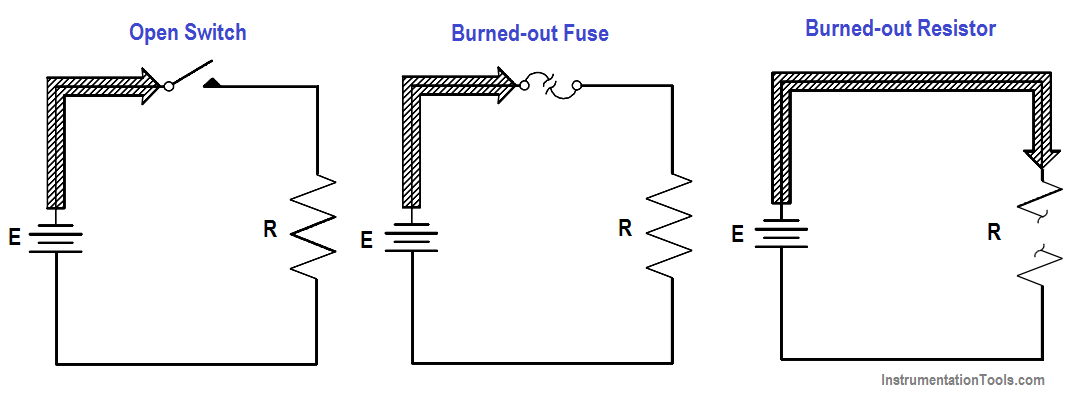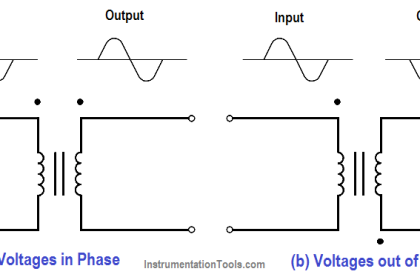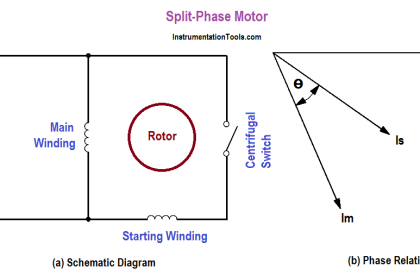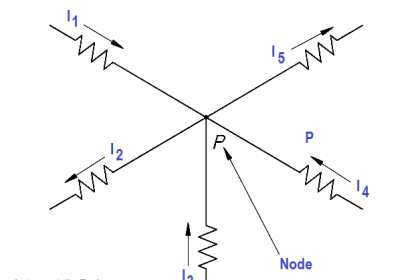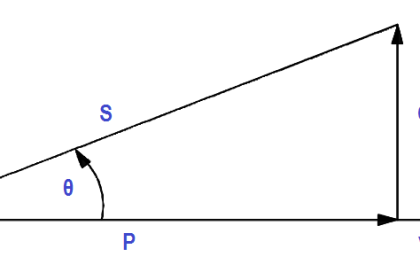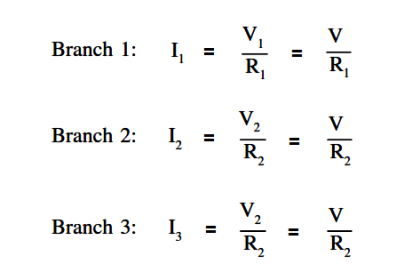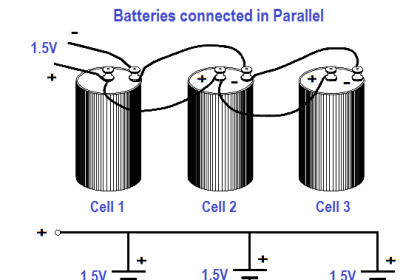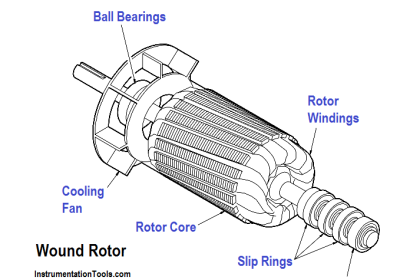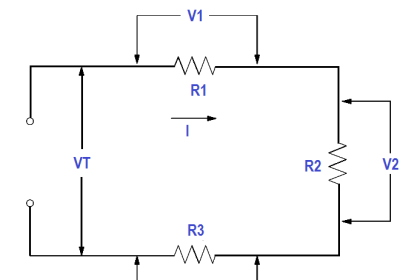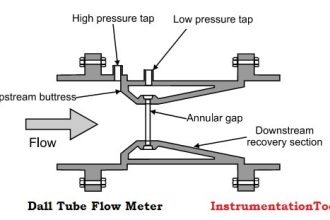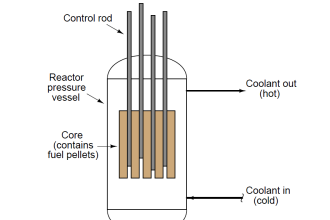Faults within a DC circuit will cause various effects, depending upon the nature of the fault. An understanding of the effects of these faults is necessary to fully understand DC circuit operation.
Series Open Circuit
A circuit must have a “complete” path for current flow, that is, from the negative side to the positive side of a power source. A series circuit has only one path for current to flow. If this path is broken, no current flows, and the circuit becomes an open circuit (Figure 53).
Figure 53 : Open Series Circuit
Circuits can be opened deliberately, such as by the use of a switch, or they may be opened by a defect, such as a broken wire or a burned-out resistor.
Since no current flows in an open series circuit, there are no voltage drops across the loads. No power is consumed by the loads, and total power consumed by the circuit is zero.
